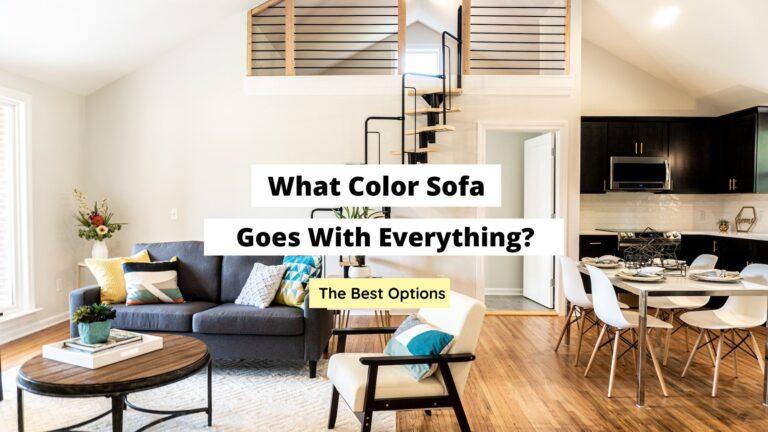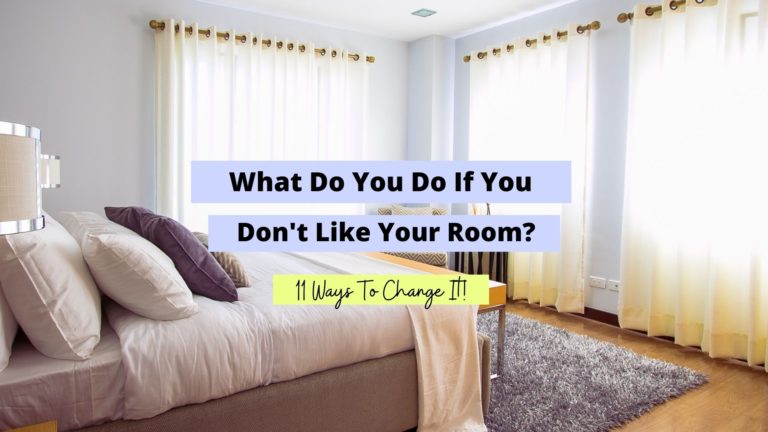How To Create A Relaxing Living Room: 10 Expert Tips

Having a relaxing living room is very important to me.
It’s the heart of my home and I expect it to be a place that feels comfortable and soothing.
A space that can be best described as a safe haven to unwind after a long day.
Ultimately, it should have a relaxing ambiance that exudes a chilled and casual feel.
The good news is that it’s not rocket science to design a space with this feeling.
There are a few specific techniques and ideas that can be used in every room of your home to create that serene space.
In this article, I hope to break down the best practices and ways to create a relaxing living room you’ll actually enjoy.
We’ll go through the exact color palettes and textures to incorporate into the space, and how to go about choosing the correct elements that promote a relaxed feeling.
Here’s what you need to do:
Table of Contents
Steps For Creating The Most Relaxing Living Room
Essentials List
Every living space will need a few necessary items to create that cozy and relaxed feel.
Here’s what you may need to include in your space:
- Cozy seats: sofas, couches, armchairs, floor cushions, ottomans
- Soft warm lights: table lamps, overhead lamps, floor lamps, or string lights
- Soft, fluffy, or textured rug
- Soft and firm throw pillows and cozy throw blankets
- Art and ornaments that spark joy
- Relaxing scented candles or essential oil diffusers
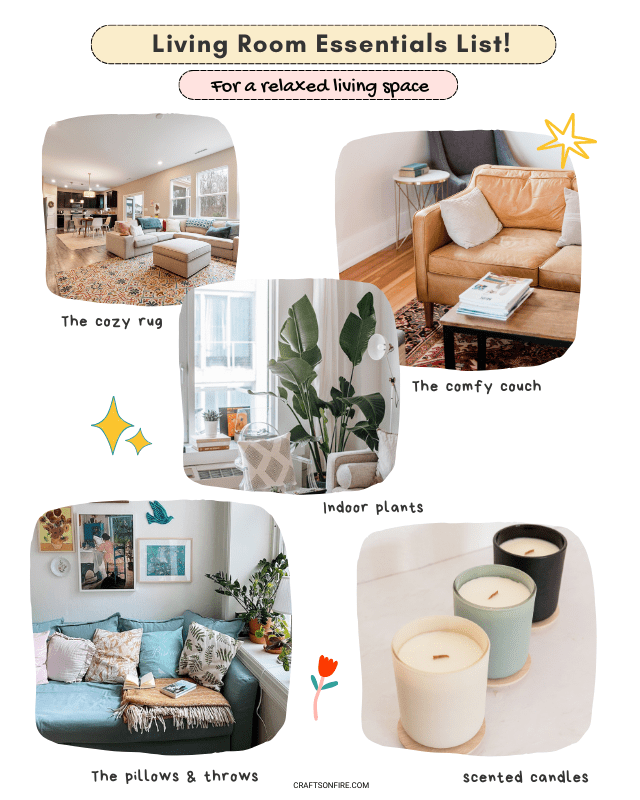
Step 1: Begin with a cozy color palette
Colors are the first step to creating a soft, relaxing, and chilled space. They have the ability to influence our emotions and make us feel a certain way.
For instance, have you ever noticed how calm you feel when surrounded by pale blues or neutral tones? What about warm ambient fall colors?
There’s magic to colors and you can easily use this tool to achieve any desired look or feel by selecting from a palette that is suitable.
For creating a relaxing living room, here are a few options you can look at:
- Soft, muted tones – Pale blues, soft grays, gentle greens, pastels, seafoam green, and sage will exude a calming, serene feel.
- Earthy shades – Soft browns, terracottas, muted greens, and muted oranges will encourage deep relaxation.
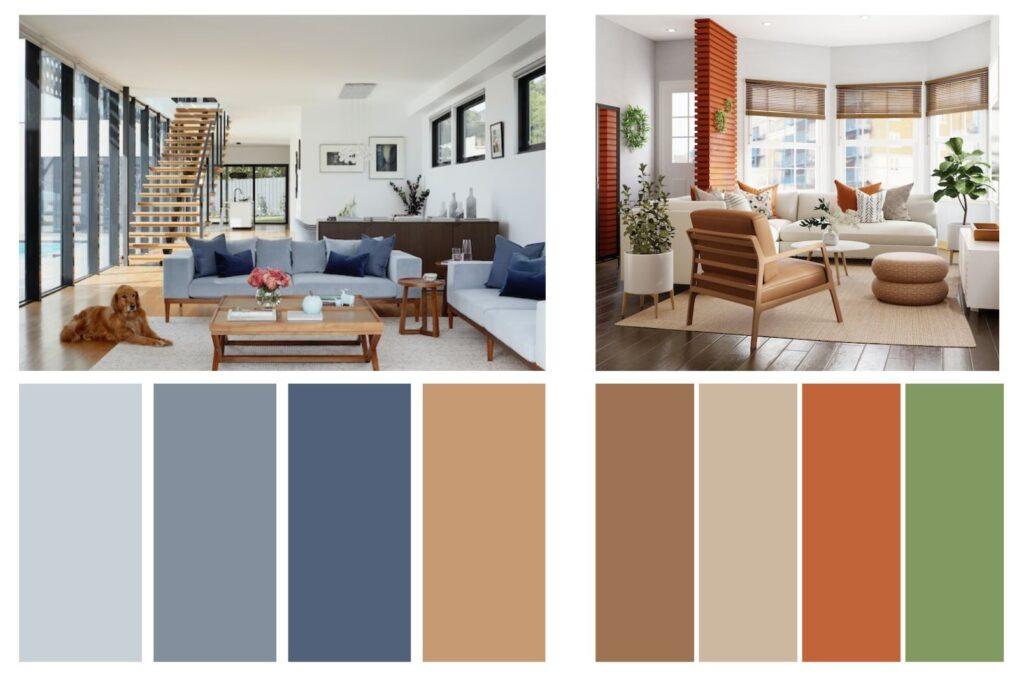
- Soft Pinks & Lavenders – Delicate, feminine, and soft. The perfect combination for a relaxing living room especially when paired with soft, muted blues.
- Neutrals – White, cream, beige, and gray create an elegant and relaxing aesthetic.
Use any of these color combinations when choosing the elements of the space such as the walls, furniture, accessories, and overall decor.
Step 2: Furniture & Accessories
Furniture
The right furniture can greatly contribute to how relaxing a living room feels.
I challenge you to try to get comfortable while sitting on a hard wooden chair that has no arm support or a soft cushion on the seat. Feels a bit hard, doesn’t it?
To optimize any space, having these pieces will help facilitate a comfortable and relaxing sitting position:
- Comfortable couch/overstuffed sofa
- Armchairs
- Footrests
- Side Tables & Coffee Table
Adjustable furniture such as recliners are pretty nice to use when you’re watching a movie or when you’d like to sit back and browse Youtube on your phone.
There should also be a coffee table or side table you can use without having to stretch or get up to place a cup down.
Every element or furniture piece should be arranged in a way that creates a natural flow.
Hygge Elements
Have you ever come across the Danish concept of “hygge” before?
This concept focuses great attention on coziness and comfort with the use of specific items and accessories that will make you feel good.
This could be fluffy blankets and soft throw cushions on the sofa, soft, warm lighting to influence the ambiance, and scented candles for that relaxed vibe and beautiful aroma.
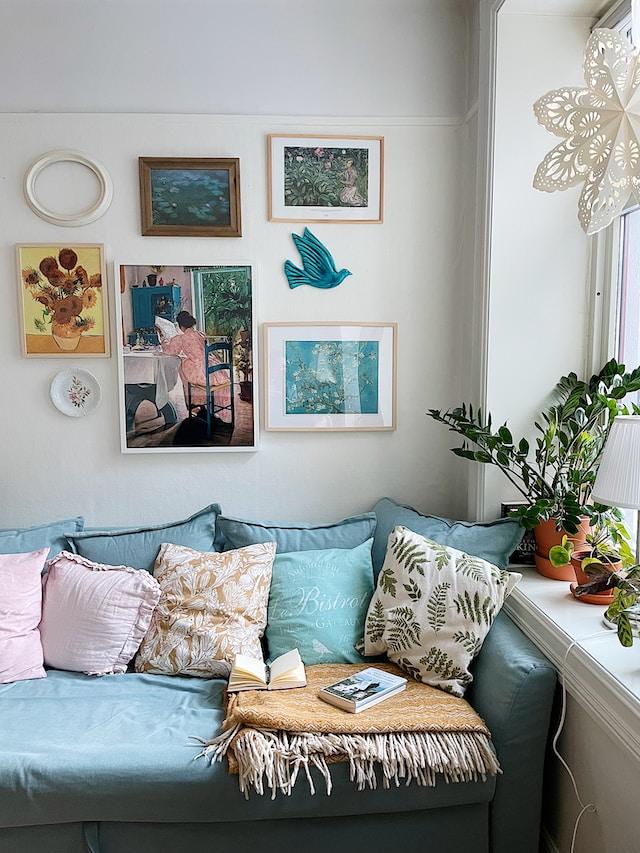
Having a few of these items will be a great way to get started on making your living room relaxing.
Oh, and you can go one step furniture by including meaningful art pieces, photos, and ornaments, that give the room a personal feel.
This will help break in the space and help it feel less stiff and more inviting.
The Reading Nook
A living room can also be designed in a way to suit your needs.
I personally love having a small reading nook that gives me a dedicated space to sit back and get cozy with a good book.
With an armchair, a fluffy rug, and warm floor light illuminating this nook, you’ll feel relaxed in no time.
As you can see, with a few changes or a well-thought-out design, it’s easy to create a relaxing corner even if you don’t make drastic changes to the entire room.
Read also: What Brings A Living Room Together? (Key Elements)
Step 3: Soft Layers of Textures
Textures are just as essential as any other item to make a living room relaxing and I usually get crazy excited when it comes to this.
Throw pillows, blankets, and area rugs are just a few ways to incorporate rich textures into the room.
It’s best to stick with materials made from wool, faux fur, cotton, and linen for the best effect.
These items not only add a warm, cozy touch but also boost the overall aesthetic and appearance of the space adding an inviting, alluring quality.
Another option to consider is wooden textures. This can make literally any space feel relaxed and serene.
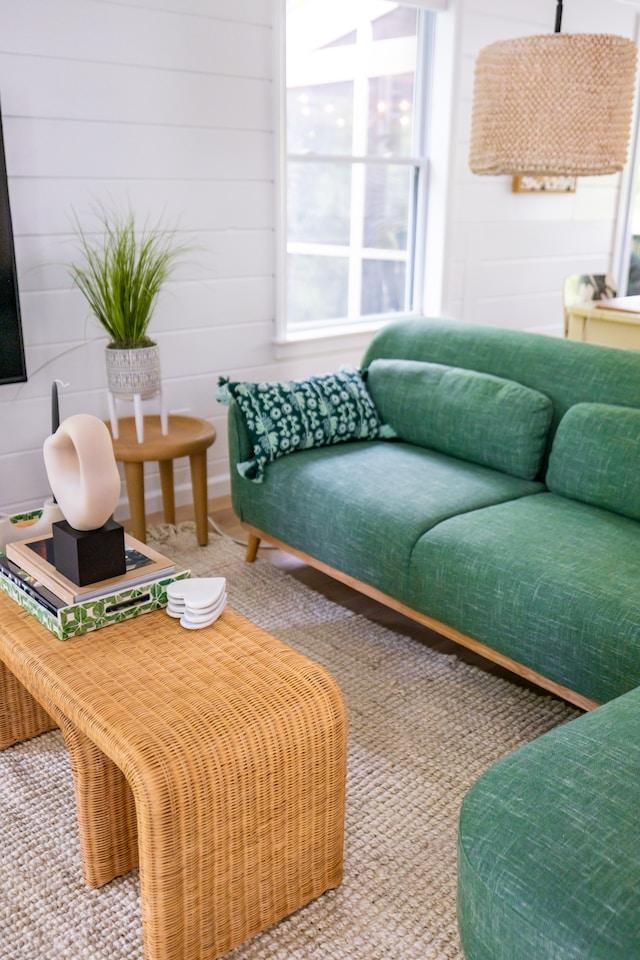
This could be woven baskets or woven elements which are popular for creating a relaxed and warm ambiance.
However, most of the time a simple wooden flooring can immediately warm up the space.
Step 4: Warm Lighting
To make your space feel relaxed, you’re going to want to pay extra close attention to the lighting of the room.
Take a quick analysis of your space and determine what kind of lights you have in the space.
Are they a warm yellow or a cool blue?
For a relaxed setting, it’s best to stick with warm lights.

This instantly sets off a relaxed mood. Lights that can be dimmed will also help you achieve an even greater level of comfort.
Now, I don’t recommend switching out your expensive overhead lights just yet.
You can still incorporate warm lighting into the space through other means such as placing a floor lamp behind the couch or a few table lamps around the room.
This will illuminate the space significantly with a warm glow.
Step 5: Indoor Plants
Having plants in the room can get you one step closer to a relaxing and pleasant atmosphere.
The greenery will add a pop of color and freshness to brighten up the space, especially in the corner of the room!

Houseplants such as peace lilies, snake plants, and pothos are the top options since it’s low-maintenance but you can go with any plants or flowers you’re drawn to.
It’s a great way to bring a small piece of nature into your home and plants often have a great boost on your overall wellbeing.
See also: Where To Put Plants In A Living Room? (Best Arrangement Ideas)
Step 6: A Clean, Organized Space
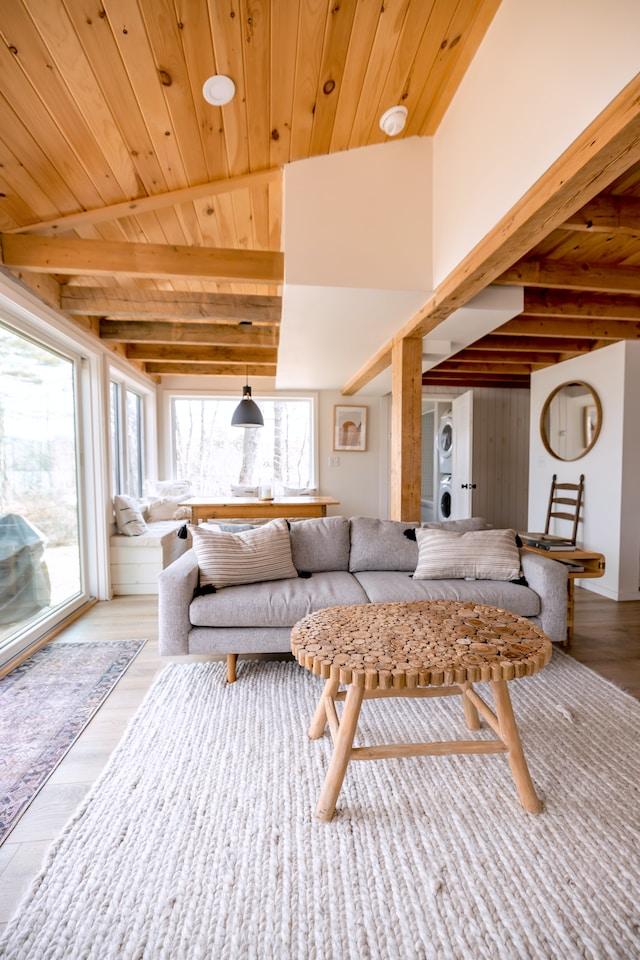
You may not realize it but clutter can be one of the biggest reasons why you feel even more stressed in this space.
When you’re surrounded by clutter on the couch, surfaces, and floors, it also negatively impacts the appearance of the space.
As much as clutter sucks, there is a bright side to it. And that’s transforming the way you organize a space with the use of fancy shelves and baskets!
Shelves and baskets will add an extra layer of detail to your space and will help maintain a tidy and clean space for longer.
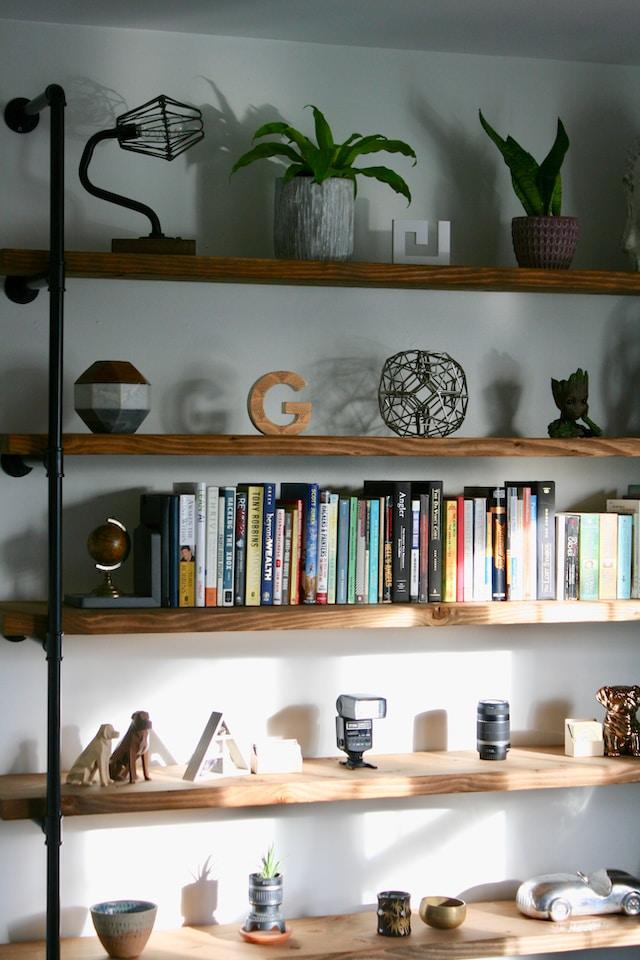
Trust me on this, a clean, clutter-free space will instantly make the space feel lighter and calmer.
Read also: 10 Reasons To Use Shelves: Why It’s A Must-Have!
Step 7: Aromatherapy
There’s one more small thing you can do to make your living room feel relaxing.
Aromatherapy is said to have many benefits on your overall wellbeing and I can attest to using it in my home too.
Scents such as lavender, chamomile, eucalyptus, and linen will have a calming effect and that sweet, lovely smell will drift throughout the space.
I suggest starting with a small diffuser and one or two essential oil blends to test it out for yourself.
If you’re not up for using essential oils just yet, then how about placing a few scented candles instead?
This will still make the space smell divine and help you feel good.
Final Thoughts
With the right colors, textures, furniture, and ambiance, you can create a space you love.
However, a relaxing space will often depend on your definition.
You don’t want to include everything if you don’t feel drawn to them.
For example, you may not like a fall color palette of warm earthy shades or a muted blue-toned space.
You could then still stick with your current color palette but you could look at the other elements to help increase the cozy charm.
Perhaps you may feel more comfortable with a soft textured rug rather than a woven rug that scratches your feet.
Small details as such can largely contribute towards your state of comfort so pay extra attention when you’re picking out specific items when designing a relaxing living room to discover the options that work for you.
Remember, the goal is to create a living room that feels comfortable and relaxing to unwind and recharge after a long day.
So, what does this look like to you?
